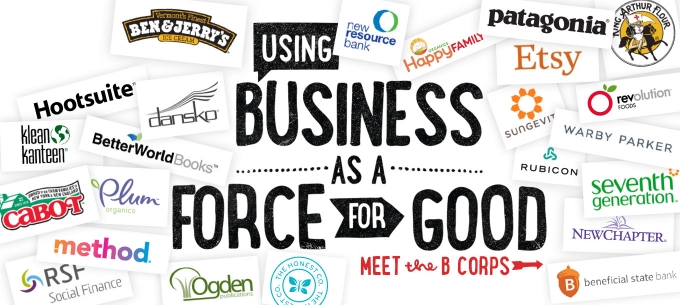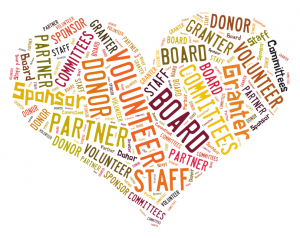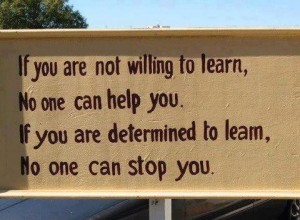
By Kat Beaulieu, Communications Strategist
Remember when you were back in business class and it first dawned on you that the system is rigged against people who want to do good AND make money? I do. It was one of those “Wait – what?” moments where I felt another shred of my ignorance/innocence slipping away.
My big “a-ha, well-duh” moment followed this obvious nugget of truth: corporations are legally obligated to make money for their shareholders, so their decision-making is necessarily driven by profit. Non-profits on the other hand, are legally forbidden from making a profit, so they’re actually discouraged from creating wealth for their employees.
In my own selfish way, I remember thinking my choices were to either embrace a life of poverty working for a non-profit, or cobble together some financial comfort by turning a blind eye to some of my ideals and working for the big, bad corporation. I suppose I’d had enough of the starving student scene and a martyr I am not, so off to the corporate world I went.
I’m certain I wasn’t the only person faced with this decision, and fortunately there are some smarter and more committed people than me who have been working to change the system, so that now (since 2010 in Maryland and now in 30 U.S. states and the District of Columbia), there IS an alternative to choosing between non-profit or for-profit. It’s called a benefit corporation, or B Corp, and it is both shaping and shaking up how business, employee recruitment and consumer spending are going to look in the near future. Why? Because Y and Z.
Generations Y and Z, that is. Unlike prior generations, Y and Z haven’t had to sever that part of their conscience that chooses between “good” non-profit and “evil” for-profit, because they’ve grown up with companies like Patagonia, Ben & Jerry’s and Seventh Generation showing us that companies can be both for-profit and good. That’s exactly what B Corps are – they are people using business as a force for good™. They have shareholders, but they’re not exclusively tied to them—they’re also legally obligated to serve their mission, which can be anything from delivering shoes to third-world children to achieving world peace.
The B Corp movement is one of the most important of our lifetime, built on the simple fact that business impacts and serves more than just shareholders—it has an equal responsibility to the community and to the planet.
Rose Marcario, CEO of Patagonia
Y and Z can choose to give their money and their brains to “good” companies, and that’s exactly what they’re doing. What this means for traditional corporations is that in order to remain competitive for Y and Z’s brains and share of wallet, they’re going to have to start upping the ante in terms of the “good” they’re doing inside and outside of the organization. And these are the stories that need to take priority in press releases. These are the stories that are going to capture media attention, get shared on social media, and ultimately drive Y and Z’s choices.
Why (or Y) is this important? Because Ys, whom we define as those ages 18-34 in 2015, now number 75.4 million, surpassing the 74.9 million Baby Boomers (ages 51-69) in the US.
Are you panicked yet? You should be! The B Corps are coming and if your PR strategy has been focused exclusively on profits and growth, it’s time to change tactics. Talk up the great initiatives your employees have been collaborating with non-profits on, and the positive impact your organization has had on your community. Turn your eyes to measure the social good you’ve achieved each quarter, rather than earnings alone.
So whose wallet and brains is your organization targeting and what mediums are you using to get those stories out? Is it time to YZ up?
Kat Beaulieu would love to repent for some of her ideal-stomping past and help you craft a YZ targeted communications strategy that profiles the social good you’ve been up to. Get in touch.




 After moving here from Ohio, I was struck by the beauty of San Diego’s beaches, bays, palm trees, rivers, canyons, mountains and deserts. With a little time, I was equally in awe of the people who are so deeply connected to their tight-knit communities, of all the passionate innovators who live here, of just how much people love this town.
After moving here from Ohio, I was struck by the beauty of San Diego’s beaches, bays, palm trees, rivers, canyons, mountains and deserts. With a little time, I was equally in awe of the people who are so deeply connected to their tight-knit communities, of all the passionate innovators who live here, of just how much people love this town.

 the return-on-investment (ROI) in PR is a seemingly herculean task. I hate to say it, but marketing directors and PR folks seem conflicted on measurement. Some are (still) using the antiquated
the return-on-investment (ROI) in PR is a seemingly herculean task. I hate to say it, but marketing directors and PR folks seem conflicted on measurement. Some are (still) using the antiquated 




 Grant Wright
Grant Wright






 Corie Fiebiger
Corie Fiebiger
 Shae Geary
Shae Geary Roman Lukjanenko
Roman Lukjanenko Phelan Riessen
Phelan Riessen Katrina Early
Katrina Early Hamish Marshall
Hamish Marshall